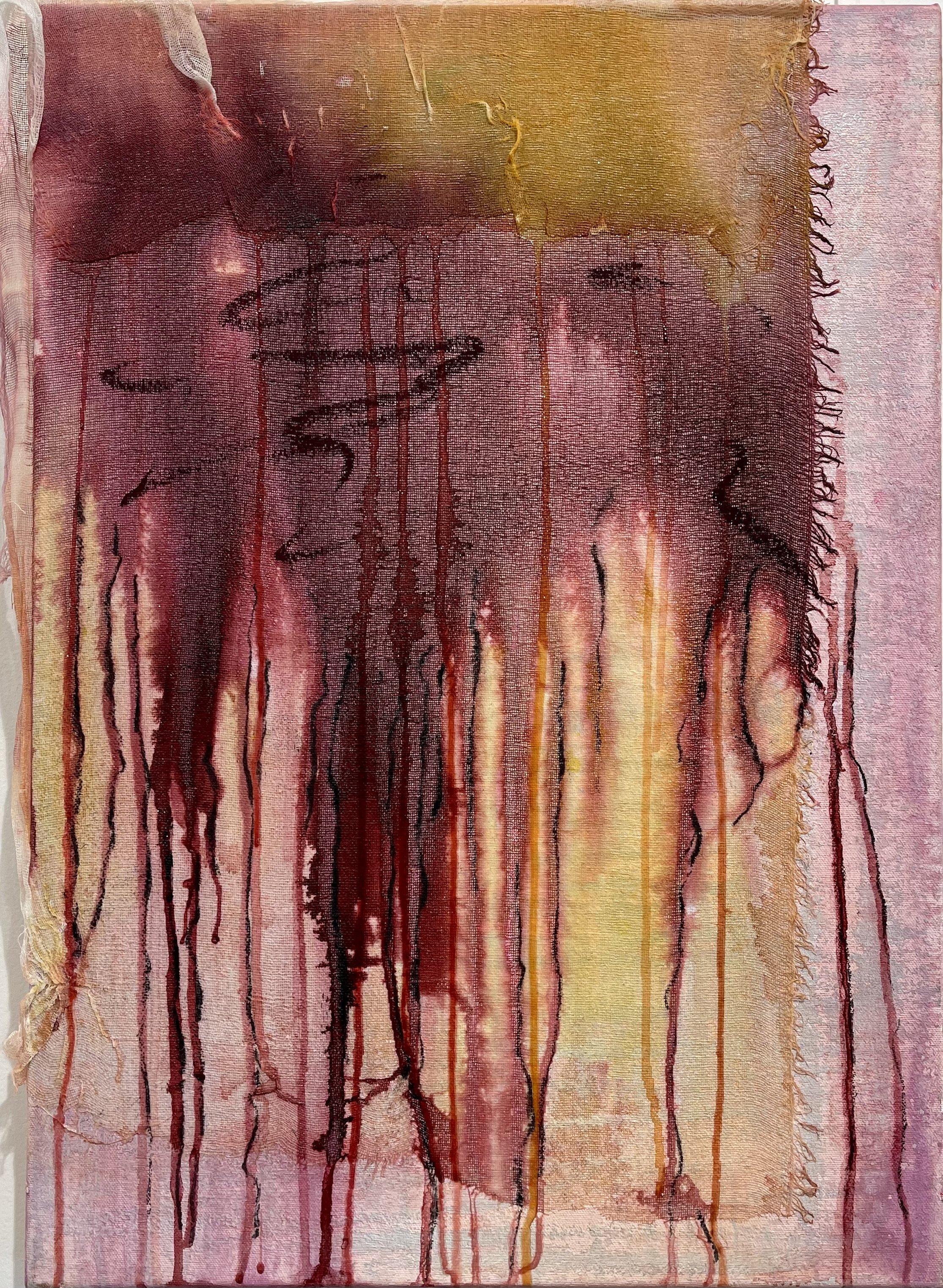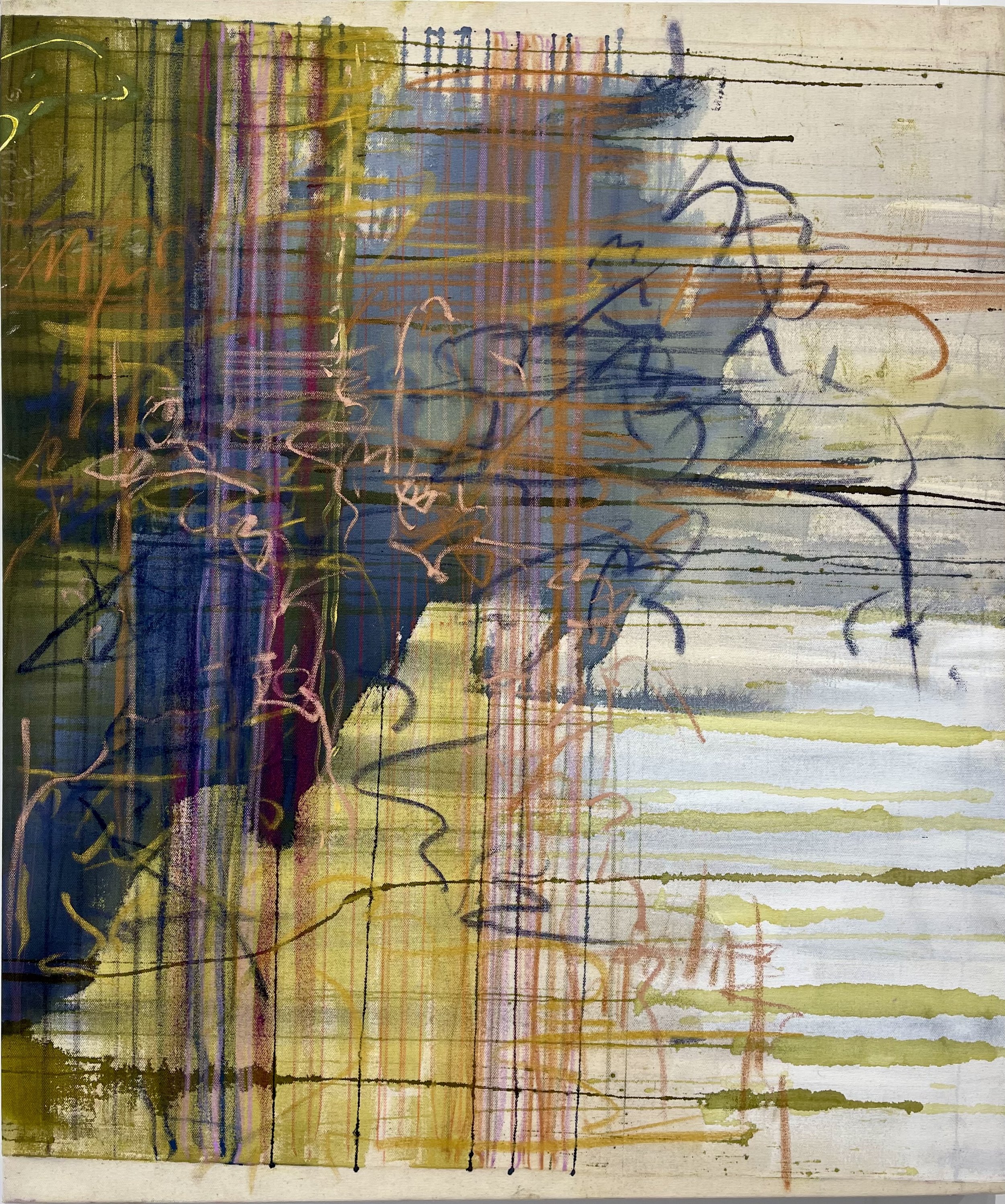September seminar critiques - notes
Peer group critique: notes:
Questions raised - Do I see these works as a series? What part of your process do you see as ‘unmaking’? Is play important in my process?
Shroud 1
Smaller pieces successful with less marks and muted colour.
Where the fabric is detached from the canvas - nice detail.
Edge of the grid distrupted. Think about edges and how you want to show them. These smaller works were spray painted but this wasn’t as successful and the edges of the larger works that showed working lines and drips.
Shroud 2
Gauze, injuries material addition.
In Greek mythology, Arachne turning into a spider -
Arachne, In Greek mythology, the daughter of the dyer Idmon of Colophon. She was a weaver who acquired such skill that she ventured to challenge Athena to a contest. Athena wove a tapestry showing the gods in majesty, while Arachne depicted them in their amorous adventures. Enraged at the perfection of her rival’s work, Athena tore it to shreds, whereupon Arachne hanged herself. Out of pity Athena loosened the rope, which became a cobweb, and Arachne was changed into a spider.
Enjoying going over the side of the canvas.
Like it’s cloth, wrapped around a support, like it is on/off a loom
Three-dimensional, disrupted grid, curious garland/adornment, like a scab or wrapping over a scab, you want to pull or rip it off.
Dipping in plaster? Something that would make it stiff or able to be moulded.
Experimenting past the actual canvas.
Like the transparency/translucency of the Mull fabric. Like a painting on a painting.
Other surface that canvas – crepe, silk?
Unmaking – what parts of your process do you perceive to be unmaking?
Threads
Mark making like scribbles in an exercise book. Cy Twombly’s Blackboard paintings.
Threads, stepping backwards to go through. Threads taken into a labyrinth so you could go backwards, find your way back out. Hansel and Gretel - crumbs.
Jute, sacking – taking out threads replacing with painted ones.
Extending more threads dangling down.
Threads left visible indicate weaving.
If not using actual threads, you are getting a good step back from weaving.
Scribble painting, not over stating.
Spatial depth with layering, adding perspective with more.
Fidelity
Named after Penelope’s fidelity while waiting for Odysseus to return from Troy. She waited 20 years.
Like a cloth wrapped around a stretcher.
Wanted to show the ‘mistake’ of the fabric slipped during stretching. Looks intentional and works well.
Cy Twombly - classical Greek references.



